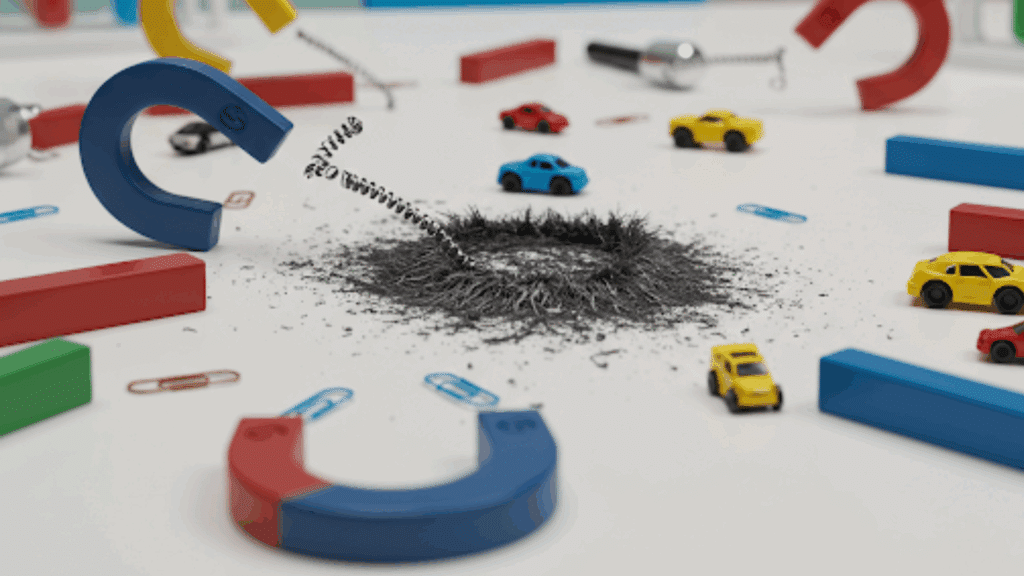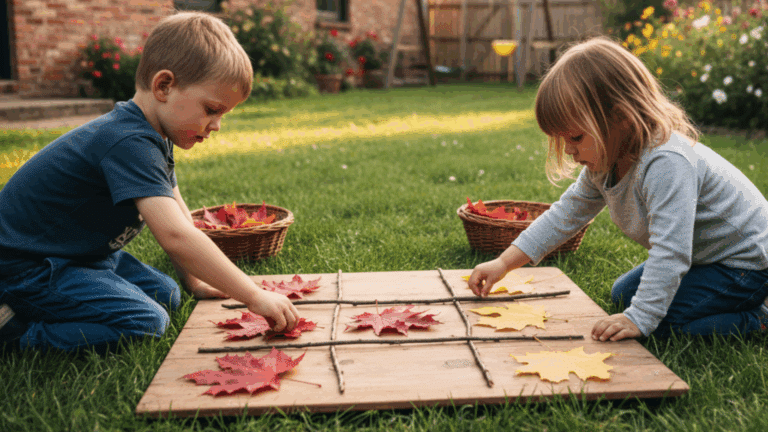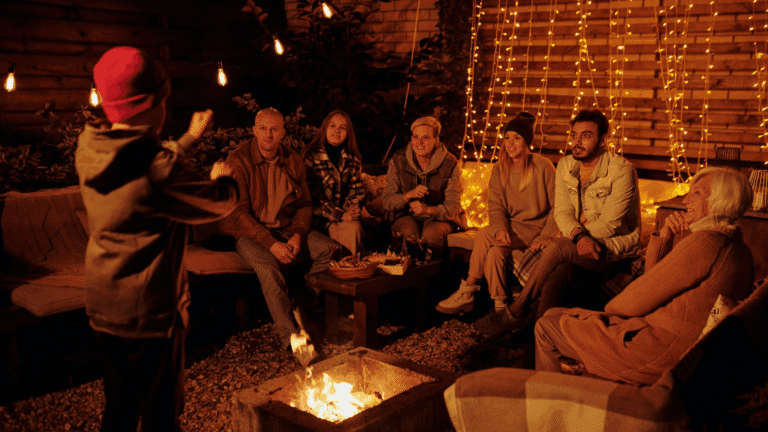Parents often struggle to find fun science activities that keep kids engaged while teaching them important concepts. Finding the right magnet experiments for kids can be tough when trying to balance education with entertainment.
This blog offers a solution with simple yet captivating magnetic activities that spark curiosity and build scientific thinking.
Readers will find easy-to-follow experiments using common household items that show the magic of magnetic forces. These activities work for various ages and skill levels, so everyone can join in the learning fun.
Understanding Magnets and Magnetism
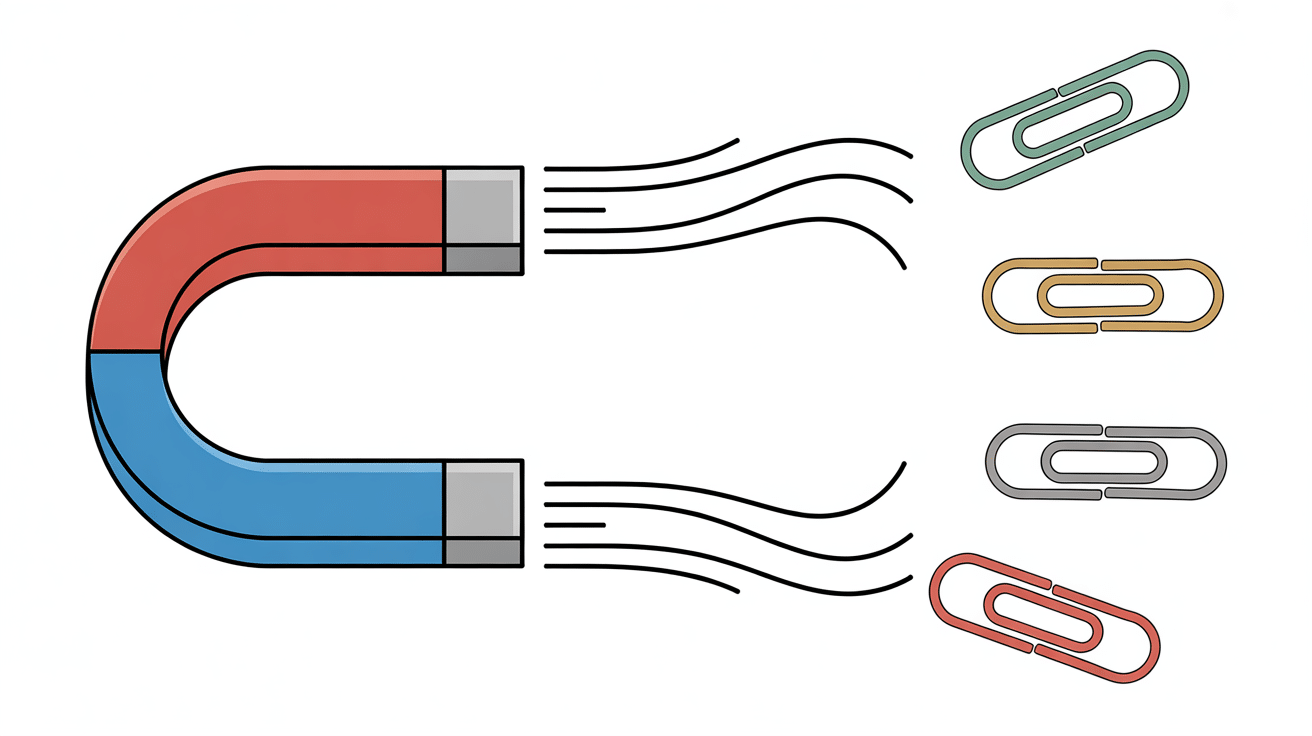
Before starting magnet experiments for kids, it’s helpful to know that magnets create an invisible force field. This force can pull certain metals closer or push other magnets away.
Magnets have tiny particles called atoms that line up in a special way to create a magnetic field. The Earth is like a giant magnet, with a magnetic field that makes compass needles point north.
Different kinds of magnets work best for various activities:
- Permanent magnets – These keep their magnetism for a long time without help
- Bar magnets – The classic rectangle shape often used in schools
- Horseshoe magnets – U-shaped and great for picking up objects.
Magnetic vs. Non-Magnetic Materials
| Aspect | Magnetic Materials | Non-Magnetic Materials |
|---|---|---|
| Attraction | Attracted to magnets and can be pulled or moved by magnetic force | Show no attraction or movement when placed near magnets |
| Composition | Contain iron, nickel, cobalt, or their alloys | Made of materials like plastic, wood, glass, aluminum, or copper |
| Common Examples | Steel paperclips, iron nails, nickel coins, refrigerator doors | Rubber bands, wooden toys, aluminum foil, plastic containers |
| Behavior in Experiments | Can be picked up, sorted, or moved using magnets in various activities | Remain stationary during magnet experiments for kids unless physically moved |
| Practical Applications | Used in motors, speakers, compasses, and magnetic storage devices | Used where magnetic interference would cause problems, like in certain electronics |
The Science Behind Magnetic Putty and Temperature
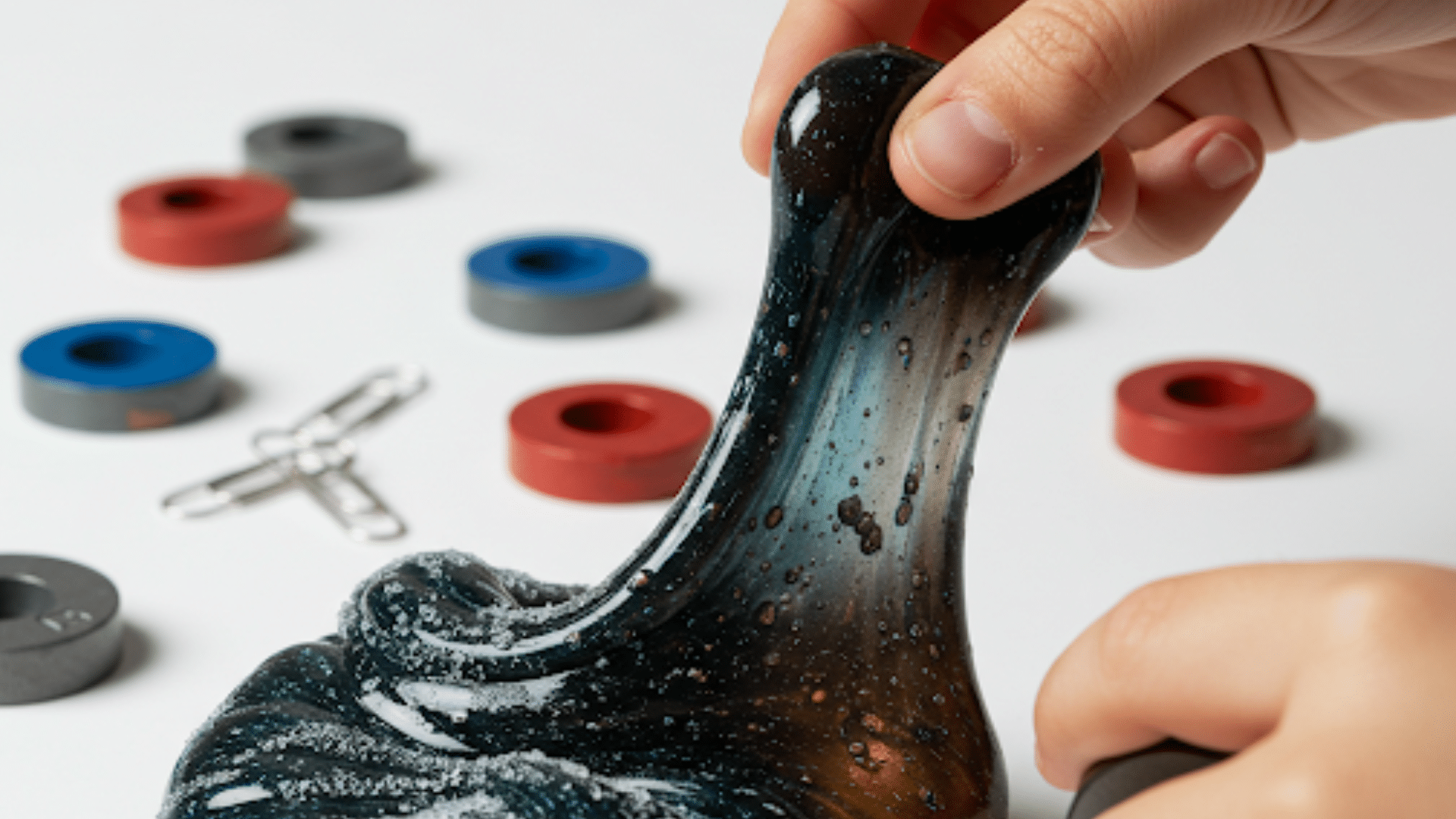
Magnetic putty offers some of the most fascinating magnet experiments for kids because it combines fun with hands-on science learning.
This special putty contains tiny iron particles that respond to magnetic fields, creating effects that change based on temperature and other conditions. Children can observe these principles in action while playing with this unusual material.
- Cold effect: Refrigerated putty becomes stiff and responds more slowly to magnets.
- Heat impact: Warmed putty flows more freely and reacts faster to magnetic fields.
- Magnet strength: Strong neodymium magnets cause quick, dramatic movements while weak magnets create subtle effects.
- Distance matters: Putty reacts strongly when magnets are close but barely moves when they’re far away.
- Time changes: Given enough time, putty can slowly engulf a nearby magnet completely.
Easy and Fun Magnet Experiments for Kids
Understanding magnetism can be a magical quest for children when paired with hands-on activities. These easy and fun magnet experiments for kids make science come alive through interactive findings and play.
Each experiment is designed to engage, educate, and excite young minds without overwhelming them.
Magnet Mayhem for Little Scientists
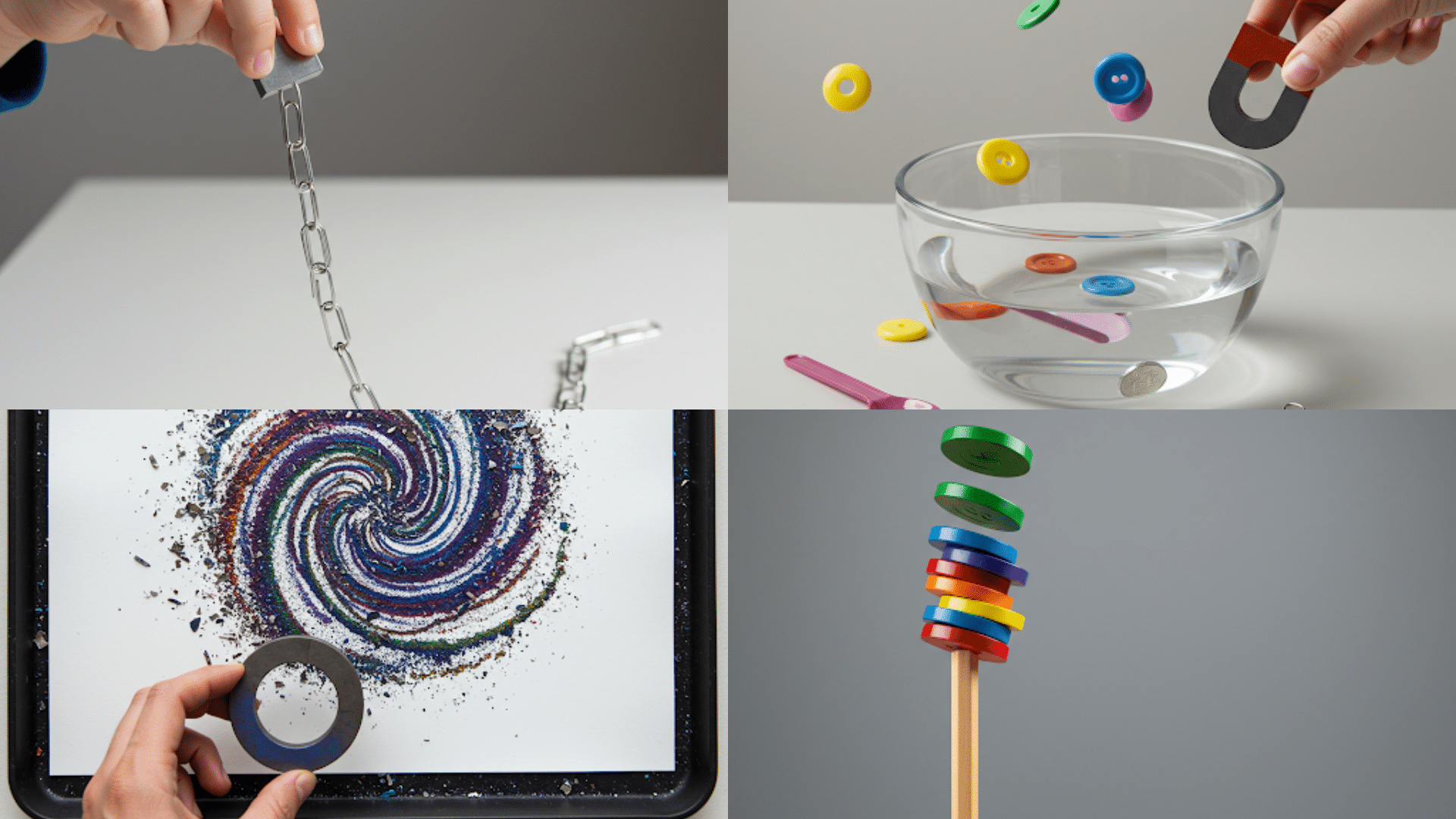
1. Magnetic Paper Clip Chain
Kids can unearth the magnetic force by creating a long chain of paper clips held together by a magnet. They’ll find how magnetism travels through the metal to link each piece.
It’s a great way to understand magnetic fields in action. This experiment also introduces the concept of temporary magnetism.
2. Sink or Stick Test
Children can test various household items in a bowl of water to see which ones sink and which ones are attracted to a magnet.
This helps distinguish between density and magnetic properties. It’s a fun way to combine magnetism with early sorting skills. Supervision is helpful during water play.
3. Magnetic Painting Magic
By placing metal shavings or small metal pieces beneath a paper and moving a magnet underneath, children can create art.
The shifting patterns result from the magnet’s invisible pull. This project lets creativity blend with science beautifully. It’s best done over a tray for easy cleanup.
4. Floating Magnet Trick
Stacking ring magnets on a pencil or dowel creates an illusion of floating. The magnets repel each other and hover slightly apart.
This visually demonstrates repulsion in an engaging way. Kids enjoy repeating the trick once they see it work.
5. Magnet Fishing Game
Using a magnet tied to a string and some paper fish with paper clips, kids can “go fishing.” This playful experiment shows how magnets attract specific materials.
It’s perfect for practicing coordination and recognition skills. Brightly colored fish can make the game more fun.
6. Race the Magnet
By rolling a magnet under a table and guiding a paperclip on top with its pull, kids can race objects. They’ll be amazed at how the magnet affects things through surfaces.
This experiment demonstrates magnetic reach. Use a stopwatch to make it more interactive.
7. Magnetic Maze Challenge
Draw a maze on cardboard and have kids guide a paperclip through it using a magnet underneath. It teaches direction, control, and the concept of magnetic force.
The maze can be redesigned for multiple attempts. It’s great for quiet play too.
8. Magnetic Treasure Hunt
Hide magnetic and non-magnetic items in a sandbox or sensory bin. Kids can use a magnet to find hidden treasures. It’s a thrilling way to learn material differences. This activity encourages observation and categorization.
9. Dancing Magnet Cereal
Place cereal pieces with small metal inside (like iron-fortified flakes) in a bowl of water. Move a strong magnet underneath to make them “dance.”
This experiment introduces nutrition science and magnetism. Kids find it surprising how food reacts.
10. Sorting Station Activity
Create a sorting tray with metal and non-metal objects. Kids can sort them using a magnet wand. It’s a great early science classification exercise. Labeling sections adds educational value.
11. Magnet-Powered Car Pull
Attach a small magnet to a toy car and use another to pull or push it from a distance. This shows how magnets can exert force without contact. Kids can measure how far the pull works. Different surfaces add variation.
12. Compass Creation Test
Float a needle on a cork in water and magnetize it to make a simple compass. Kids learn about navigation and the Earth’s magnetic field. It’s best done with adult supervision. Comparing it to a real compass adds a learning layer.
13. Climbing Paperclip Experiment
Hang a paperclip on a string and use a magnet to make it climb. As the magnet moves up, the paperclip follows. Kids see the magnetic force in motion. The reaction sparks curiosity about invisible forces.
14. Magnetic Sculptures Game
Offer magnetic balls or shapes and let kids build structures. They’ll notice how magnets stick in different directions. It builds creativity and spatial reasoning. It’s also satisfying to pull the creations apart.
15. Bottle Magnet Swirl
Fill a plastic bottle with metal items and glitter, then shake and use a magnet to pull objects. This mixes sensory play with science. Kids observe how only some items respond. It’s visually appealing and calming.
16. Magnet Memory Match
Stick magnetic dots behind cards and use a magnet wand to pick them. Turn it into a memory game by matching symbols. This adds educational fun to magnetic learning. Kids enjoy the surprise element.
Additional Fun Magnet Activities for Curious Young Minds
Once children get the hang of basic magnetic experiments, it’s time to spark greater curiosity with more inventive challenges. Each idea encourages hands-on exploration while reinforcing key science concepts in an engaging way.
Mess-Free Magnetic Learning
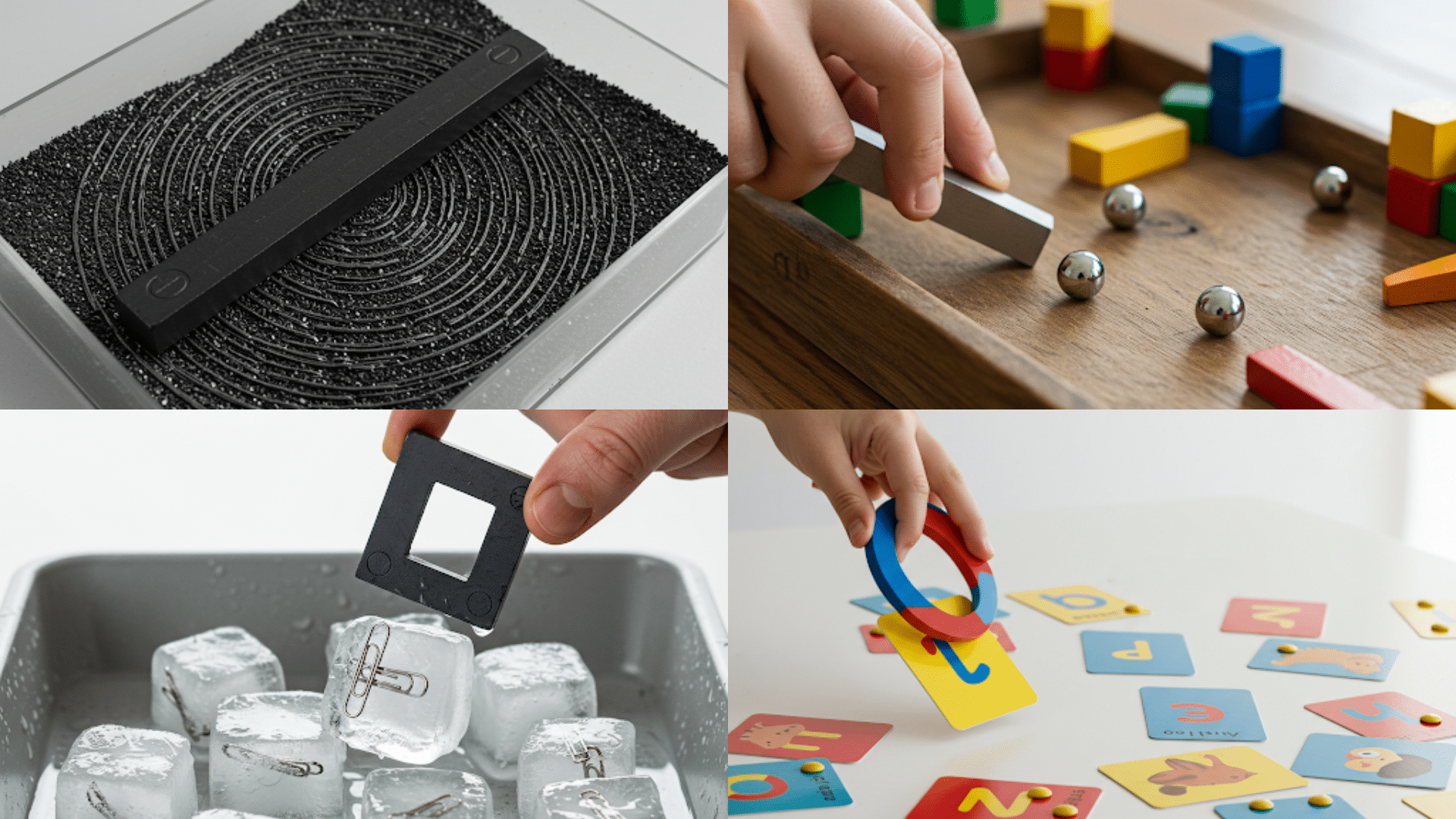
17. DIY Magnetic Field Viewer
18. Test Tube Magnet Pull
19. Magnetic Marble Roll
20. Stacking Magnet Tower
21. Magnet in the Middle Relay
22. Magnetic Alphabet Match
23. Pin Pull Challenge
24. Magnetic Slime findy
25. Magnet Hover Test
26. Magnetic Drawing Board
27. Ice Cube Magnet Rescue
28. Balloon Magnet Maze
29. Magnet Strength Test
30. Mystery Box Magnet Test
Big Ideas with Magnetic Power
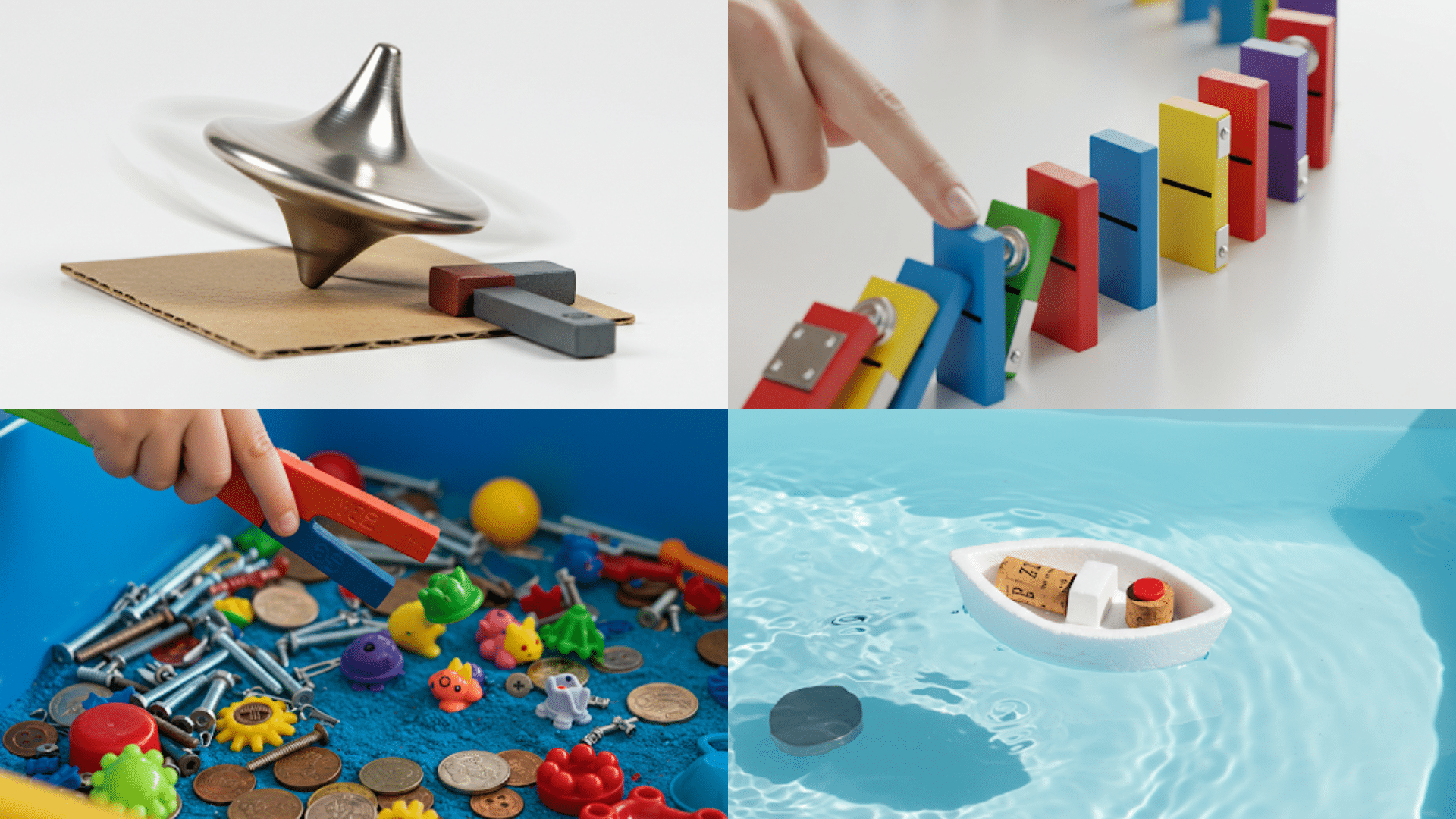
31. Magnet-Powered Spinner
32. Edible Magnet Hunt
33. Magnetic Domino Chain
34. Floating Magnet Boat
35. Magnetic Monster Feet
36. Secret Magnet Message Board
37. Shoebox Magnetic Lab
38. Magnetic Chain Reaction Puzzle
39. Fridge Magnet Force Test
40. Magnetic Puppet Show
41. Magnet vs Gravity Drop
Summing It Up
These magnet experiments for kids offer more than just fun science activities. They build important skills like observation, testing, and asking questions.
The magic of magnetism creates moments of wonder that can spark a lifelong interest in how things work. Through these hands-on activities, children learn about forces they cannot see but can definitely feel and measure.
The concepts learned through magnetic play form building blocks for understanding more complex science later on.


